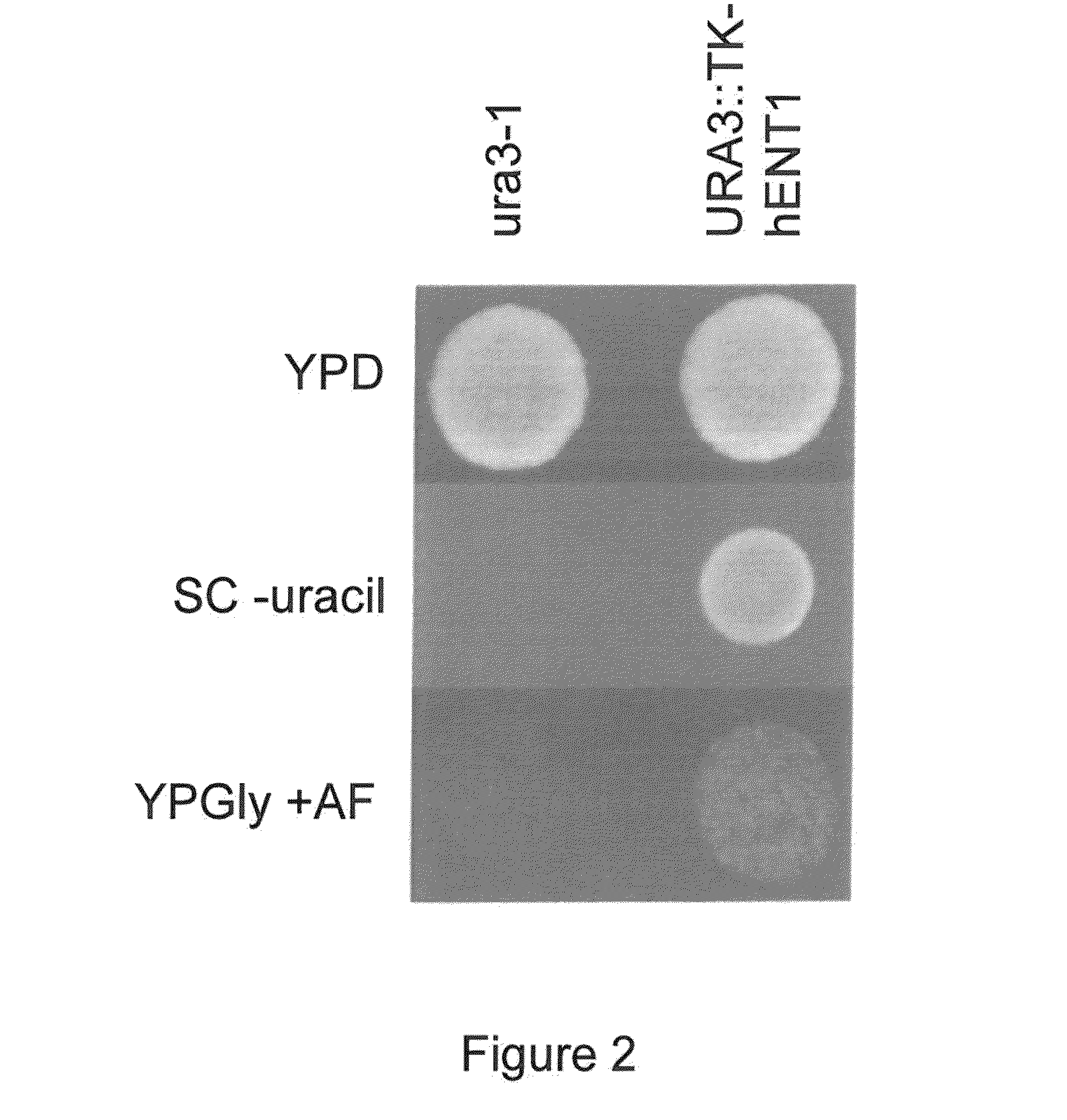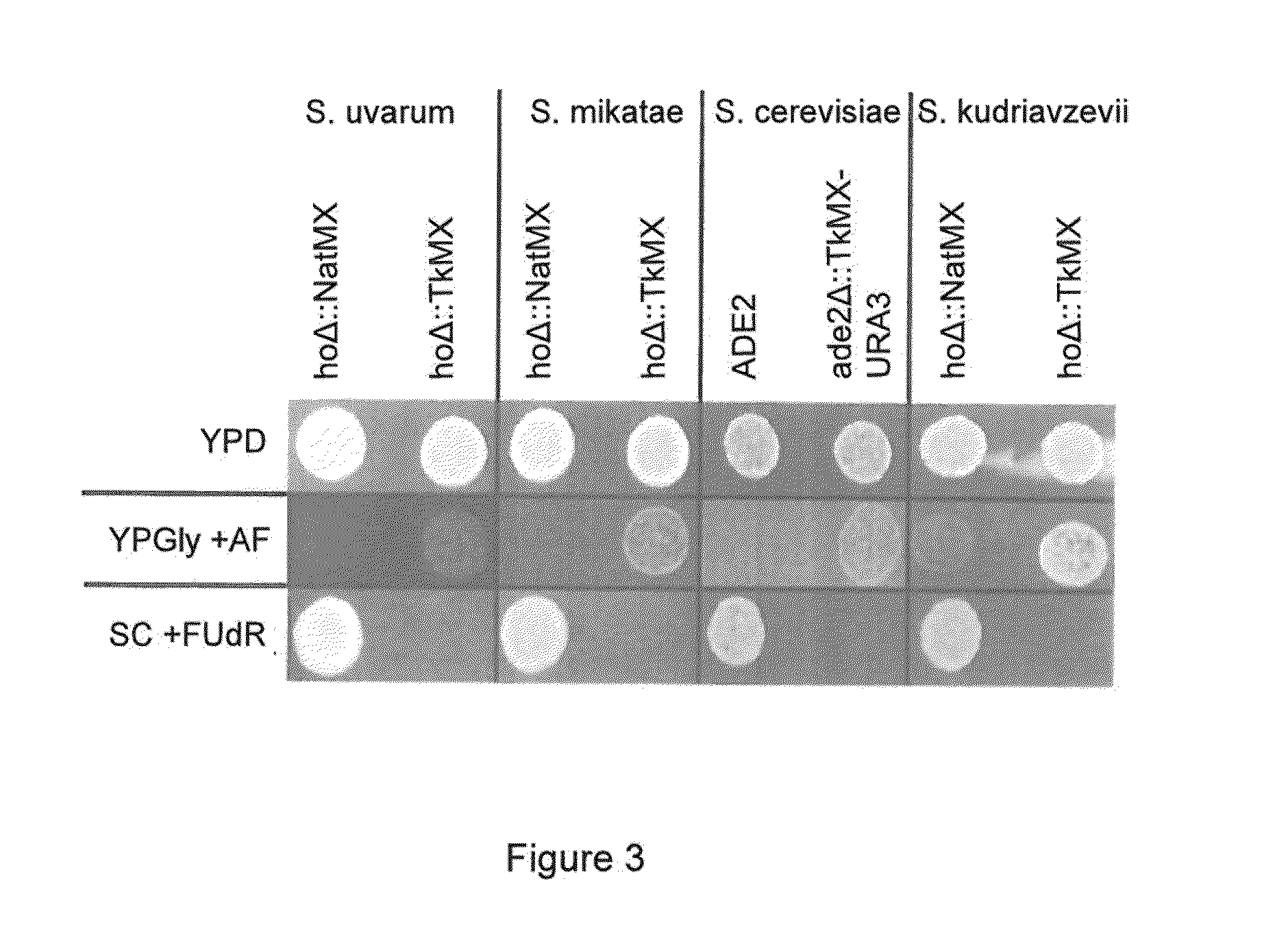Constructs and methods for genome editing and genetic engineering of fungi and protists
a technology of applied in the field of constructs and methods for genome editing and genetic engineering of fungi and protists, can solve the problems of difficult propagation and manipulation of auxotrophic strains
- Summary
- Abstract
- Description
- Claims
- Application Information
AI Technical Summary
Benefits of technology
Problems solved by technology
Method used
Image
Examples
examples
Primers, Strains, and Media
[0057]Strains used or created by this work are noted in Table 1. Primers used and their sequences are noted in Table 2. For general culturing of strains in this work, either YPD (1% yeast extract, 2% peptone, 2% glucose) or SC (0.17% yeast nitrogen base, 0.5% ammonium sulfate, 0.2% complete drop out mix, 2% glucose) media was used. Prior to galactose induction, cells were grown overnight in medium consisting of 2% yeast extract, 4% peptone, 100 mg / L adenine hemisulfate, and 0.2% glucose. Galactose induction was performed in 2% yeast extract, 4% peptone, 100 mg / L adenine hemisulfate, and 4% galactose. TK selection was done on YPGly+antifolates (YPGly+AF, 1% yeast extract, 2% peptone, 200 μg / mL methotrexate, 5 mg / mL sulfanilamide, 5 mg / mL thymidine, and 50 μg / mL hypoxanthine). For counterselection, 50 μg / mL 5-fluorodeoxyuridine was added to SC medium (SC+FUdR); double replacement in diploids substituted the glucose in this forumula with 5% glycerol (SCGly+FU...
PUM
| Property | Measurement | Unit |
|---|---|---|
| optical density | aaaaa | aaaaa |
| optical density | aaaaa | aaaaa |
| optimal temperature | aaaaa | aaaaa |
Abstract
Description
Claims
Application Information
 Login to View More
Login to View More - R&D
- Intellectual Property
- Life Sciences
- Materials
- Tech Scout
- Unparalleled Data Quality
- Higher Quality Content
- 60% Fewer Hallucinations
Browse by: Latest US Patents, China's latest patents, Technical Efficacy Thesaurus, Application Domain, Technology Topic, Popular Technical Reports.
© 2025 PatSnap. All rights reserved.Legal|Privacy policy|Modern Slavery Act Transparency Statement|Sitemap|About US| Contact US: help@patsnap.com



